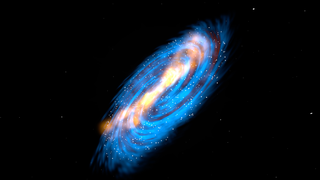Universe
ID: 12719
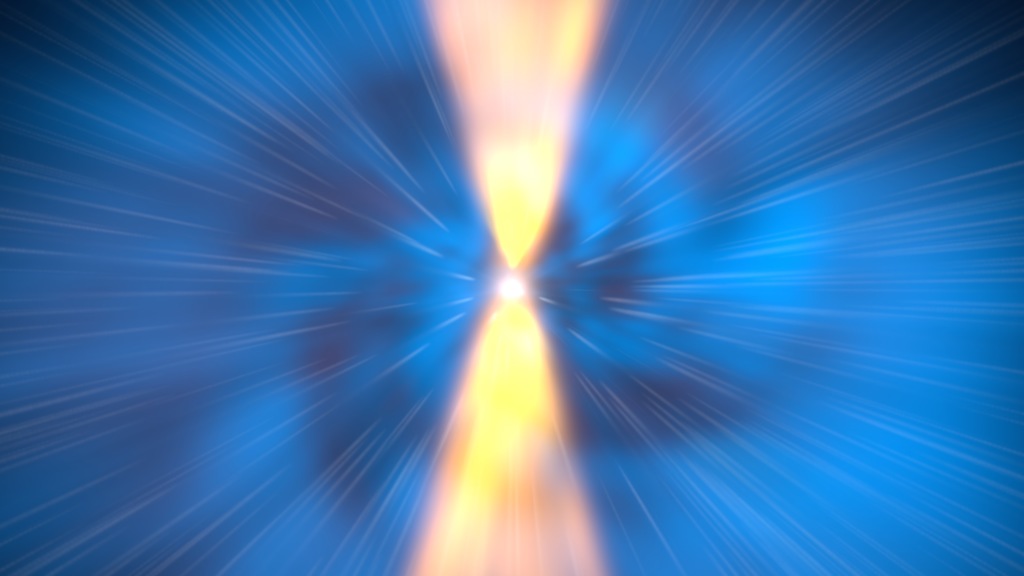
At the center of the galaxy Markarian 573 sits a supermassive black hole. The black hole pulls matter towards it, and this material produces high-energy light as it's gobbled up. This light, however, has a hard time escaping. It’s blocked by a dense ring of dust and gas surrounding the black hole. Light can only escape through cone-shaped areas above and below this ring. These cones of light give the galaxy's inner region its signature hourglass shape as seen by NASA’s Chandra X-ray Observatory. Gas clouds orbiting around the galaxy become electrically charged when they pass through this powerful emission. Gas less than 2,500 light-years from the black hole accelerates away, forming fast-moving outflows. Farther off, the gas becomes charged but stays in the galaxy's disk. This "feedback process" may help scientists understand why galaxies like Markarian 573 have such an odd structure and unusual gas motions. Watch the video to learn more.

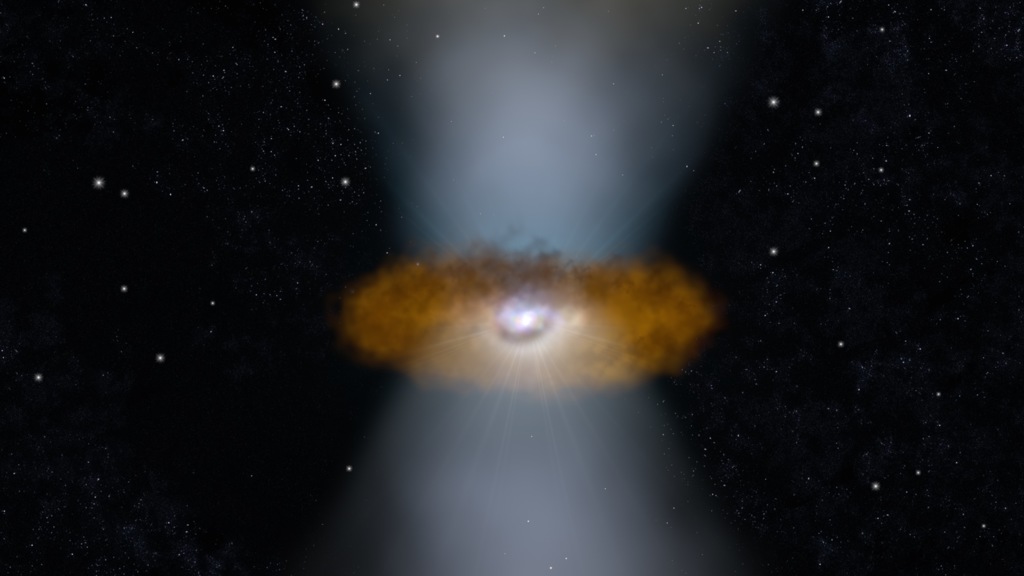

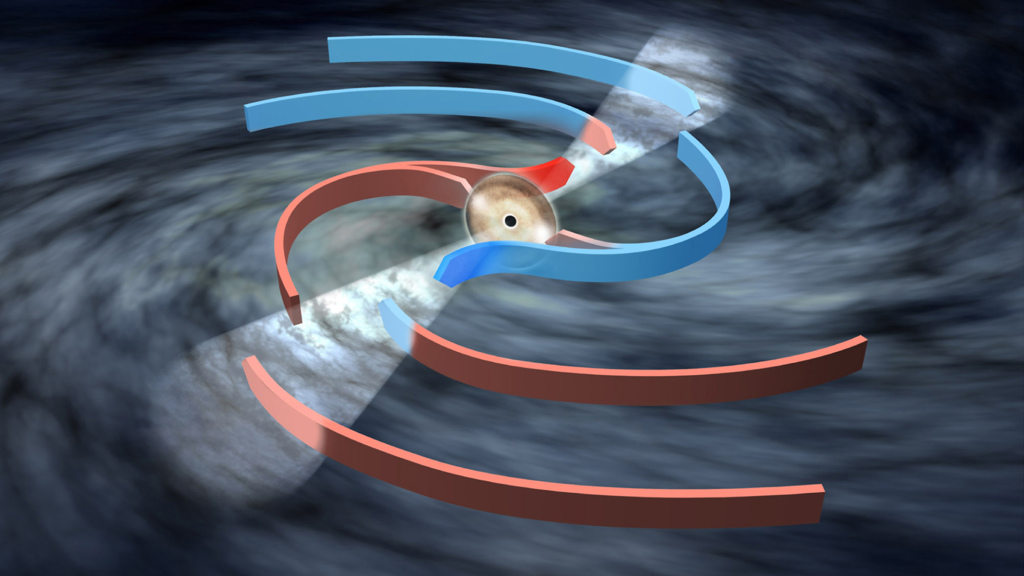
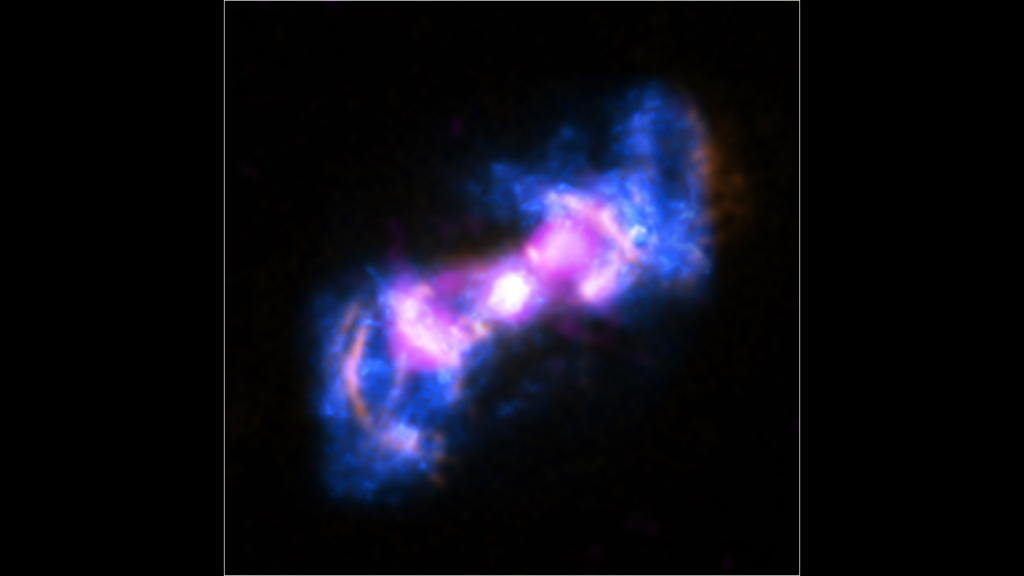
Hourglass Galaxy






Source Material
For More Information
Story Credits
Lead Visualizer/Animator:
Scott Wiessinger (USRA)
Lead Producer:
Scott Wiessinger (USRA)
Lead Scientist:
Travis C. Fischer (USRA)
Lead Writer:
Francis Reddy (Syneren Technologies)
Scott Wiessinger (USRA)
Lead Producer:
Scott Wiessinger (USRA)
Lead Scientist:
Travis C. Fischer (USRA)
Lead Writer:
Francis Reddy (Syneren Technologies)
Please give credit for this item to:
NASA's Scientific Visualization Studio
Images courtesy of Sloan Digital Sky Survey, NASA Goddard Space Flight Center/Theophilus Britt Griswold, X-ray: NASA/CXC/SAO/A.Paggi et al; Optical: NASA/STScI; Radio: NSF/NRAO/VLA
NASA's Scientific Visualization Studio
Images courtesy of Sloan Digital Sky Survey, NASA Goddard Space Flight Center/Theophilus Britt Griswold, X-ray: NASA/CXC/SAO/A.Paggi et al; Optical: NASA/STScI; Radio: NSF/NRAO/VLA
Short URL to share this page:
https://svs.gsfc.nasa.gov/12719
Keywords:
SVS >> HDTV
SVS >> Astrophysics
SVS >> App
NASA Science >> Universe
https://svs.gsfc.nasa.gov/12719
Keywords:
SVS >> HDTV
SVS >> Astrophysics
SVS >> App
NASA Science >> Universe
